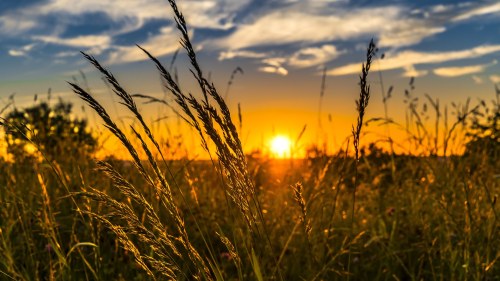A Thanksgiving Legacy: Fighting for Indigenous Food Sovereignty

“Thanksgiving must be a day to recognize the Indigenous fight against colonization and its legacies as we seek to reclaim our foods,” writes Jayden Lim.
In October of 2022, the Chicago Council on Global Affairs is launching a blog series titled, “Stewardship, Sovereignty, and Solutions” that features the voices of guest authors from Indigenous organizations and communities. Recognizing that Indigenous communities around the world disproportionately experience the pressures of climate change, global conflicts, and the pandemic, while simultaneously stewarding 80 percent of the world’s biodiversity, the blog series aims to highlight Indigenous and traditional agricultural practices in the United States and globally. In bringing attention to Indigenous agriculture and foodways, we aim to promote a truly inclusive global food system that recognizes and actively counteracts the oppression of Indigenous peoples.
For holidays like Thanksgiving, food is intrinsically linked to culture; in many Indian cultures, this same ideology applies. Between the strawberry festival and the dance that takes place after the first fall of acorns, food shapes the very fabric of our cultures, relationships with one another, and Indian identity. If one is to separate the people from its food, it is to destroy the very culture of our people. Food is powerful, and control over a peoples’ food supply is an ultimate colonizing power in itself. As Thanksgiving approaches, many people gather across the nation to decide what ingredients will be used in their stuffing, or which family member is making the mashed potatoes. In many Native American communities, Thanksgiving is not a cheerful holiday, but rather a day of mourning. Not only do we mourn our ancestors who were taken during colonization, but also our Indigenous foods we have declining access to.
Indigenous people were separated from their culture as they were forced to consume European foods, leading to a decrease in population that went hand in hand with conversion and colonization. These systems of oppression implemented by colonizers like Christopher Columbus diminished Indigenous culture, and continue today through permitting systems that fail to recognize the sovereignty of Indigenous peoples. Through acknowledging the true legacy of Thanksgiving and its ramifications for Indigenous people, we can begin to elevate Indigenous worldviews and voices, especially as they relate to culture through food.
European Colonization Severely Diminished Indigenous Peoples’ Access to Traditional Foods
A few months after his arrival in the Bahamas, Columbus was faced with a massive problem: his army of men kept falling ill in the New World. Believing their mortality would decline once reunited with European food, Columbus insisted that Indigenous foods were poisonous to the European body, and that varieties in food created bodily differences between the Indigenous and the European. Thinking race and food were linked to the extent that a European body could be physically altered by Indigenous food, obtaining European foods became of the utmost importance to Columbus.1 Race is a much more complicated concept than the food a person consumes, but Spanish colonizers’ ideas surrounding Indigenous foods fueled the import of European foods and implementation of agricultural practices that would severely diminish Indigenous peoples’ access to their traditional foods.
European agricultural practices were implemented on a massive scale upon the development of the California Mission System.2 Despite the fact that many previous theories regarding race were abandoned by this time, it is still apparent that food is a major colonizing power. The Spanish introduced new livestock that competed for the same foods vital to Indigenous people’s diets, and threatened native animals, such as deer, which is an important source of protein for Indigenous people.3 The competition for Indigenous resources resulted in plummeting numbers of Indigenous plants and animals that Californian Indians had depended on since time immemorial, and consequently resulted in hunger, malnutrition, and starvation. Paired with the introduction of diseases, the Indigenous people of California who lived in close proximity to the missions had two options: go to the missions for a stable food supply, or die trying to tend what was once a well-cared for garden.
Abrupt Diet Changes for Indigenous Peoples Decreased Population and Destabilize Indigenous Food Supply
In the mission system, Indigenous people were often forced to perform manual labor and subsequently alter their diets. Forced dietary changes from native foods high in proteins to a European diet heavy in carbohydrates—in addition to malnutrition, unsanitary living conditions, and European diseases—contributed to low birth and high mortality rates among Indigenous people.4 Between 1769 and 1834, more than 54,000 California Indians died, and the birth rate declined by 60 percent. Not only did dietary changes contribute to population decline, but it also went hand in hand with conversion and colonization.
The establishment of European agricultural practices and foods in the New World drastically changed the organizational makeup of Indian people to resemble a structure more similar to that of European society. This consequently created a reliance on Spaniards and missionaries who maintained control over the new food supply. The convergence of Indigenous people and colonizers resulted in the genocide of Indigenous peoples and our foodways.
Colonial Practices Led to Present-Day Food Insecurity for Indigenous People
This legacy of colonization persists today, as one in four Native Americans in the United States experience food insecurity, compared to one in eight Americans overall. A 2019 study conducted on northern California and southern Oregon found that 92 percent of Native American households were plagued by food insecurity. The study also revealed that nearly 70 percent of Native American households “never or rarely get access to the native foods they want.” Households that have better access to native foods have higher levels of food security. While poverty and the remote nature of reservations also affect food insecurity amongst Indigenous people, the root cause stems from colonial practices that diminished natural food resources and thus introduced food insecurity to Indigenous communities.
Permitting Systems Perpetuate Colonialism and Counteract Food Sovereignty
Colonization continues through a permitting system established by the California state government. Permits are given to those who the Department of Parks and Recreation identifies as “qualified persons participating in the continuing practice of cultural traditions as part of the State’s historic preservation effort,”5 which includes gatherings to celebrate Indigenous foods. However, permits are often denied, lost, or ignored, which prevents Indigenous people from legally gathering to celebrate traditional foods.
The California Indian Museum and Cultural Center (CIMCC) undertook a community needs assessment in 2019 to learn more from Native community members about the problems they encounter when attempting to gather in public parks. Approximately 95 percent of respondents shared that they gather in public lands whether or not they have a permit, illuminating disparities between the number of permits requested and granted. In addition, many community members told CIMCC staff that they feel uncomfortable and unsafe gathering in public areas with or without a permit because they are afraid of harassment. All California Native American people who gather and harvest on public lands are subject to harassment by the non-native public, park officials, and law enforcement, again maintaining a barrier between Indigenous people and their traditional foods.
In order to protect Native knowledge and traditions, we must speak out against the permitting system. Through elevating Indigenous voices, and protecting Indigenous culture and food, we can counteract colonial narratives embedded in the permitting system and other modern policies. Supporting Advancing Cultural Opportunities for Reclaiming Nutrition (ACORN) is one of many ways to do so. As a community of Pomo and Miwok youth who advocate for our tribal communities and cultures—especially through food—ACORN actively counteracts the oppression of Indigenous foods by celebrating them. In supporting our mission and the work of other like-minded Indigenous organizations, it is possible to create a safe environment for my people to gather traditional foods; it is possible to make Indigenous food sovereignty a reality.
The permitting process and the resulting lack of access to Indigenous foods is rooted in the colonial practice of separating Indigenous people from their food, but it is not irreparable. In continuing ACORN’s decolonizing work, we can one day obtain full tribal sovereignty, and continue the long fight against legacies of colonization in our country. Thanksgiving must be a day to recognize the Indigenous fight against colonization and its legacies as we seek to reclaim our foods.
Learn more about ACORN by visiting www.acornbites.com.
- 1Earle, Rebecca. “‘If You Eat Their Food...’: Diets and Bodies in Early Colonial Spanish America.” The American Historical Review 115, no. 3 (2010): 688–713. http://www.jstor.org/stable/23302943.
- 2Father Serra founded the first mission, Mission San Diego de Alcalá, in 1769.
- 3Lorimer, Michelle M, and Shelley Brooks. “4.2B Missions' Impact on Environment and Economy.” Teaching California, https://www.teachingcalifornia.org/inquiry-sets/4-2b-mission-impact-on-environment-and-economy/.
- 4Popper, V. S. ”Change and Persistence: Mission Neophyte Foodways at Selected Colonial Alta California Institutions.“ Journal of California and Great Basin Anthropology, https://escholarship.org/uc/item/72k1b2q3
- 5California State Parks, State of California. “California State Parks Tribal Gathering Permits.” CA State Parks, https://www.parks.ca.gov/?page_id=30611.
Related Content
- Embracing Dandelions as Food and Medicine
- Going Beyond Regenerative Agriculture on Tribal Lands
- Expanding "638" to Enhance Native American Food Sovereignty
- Flavors and Culture: Food Systems Through Indigenous Women's Eyes
- A Thanksgiving Legacy: Fighting for Indigenous Food Sovereignty
- Native Food Sovereignty: Strengthening Connection to Culture
- Reconnecting to Indigenous Food Sovereignty Values and Practices
- Embracing Interconnectedness: How Indigenous Foodways Can Save Us

